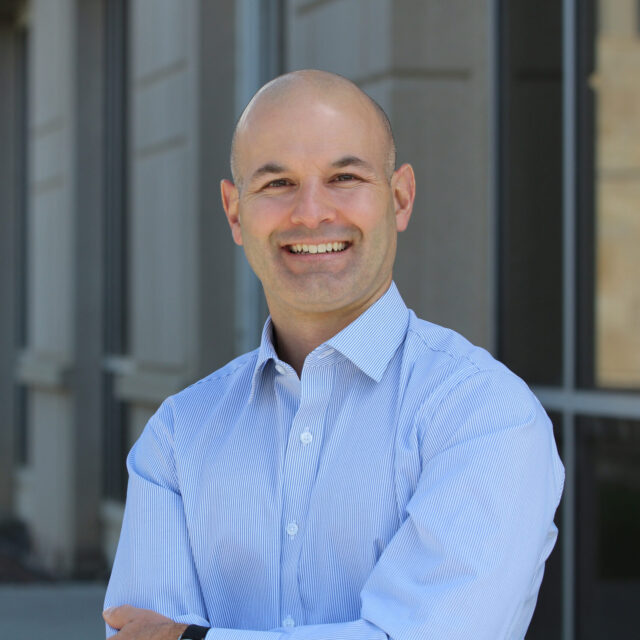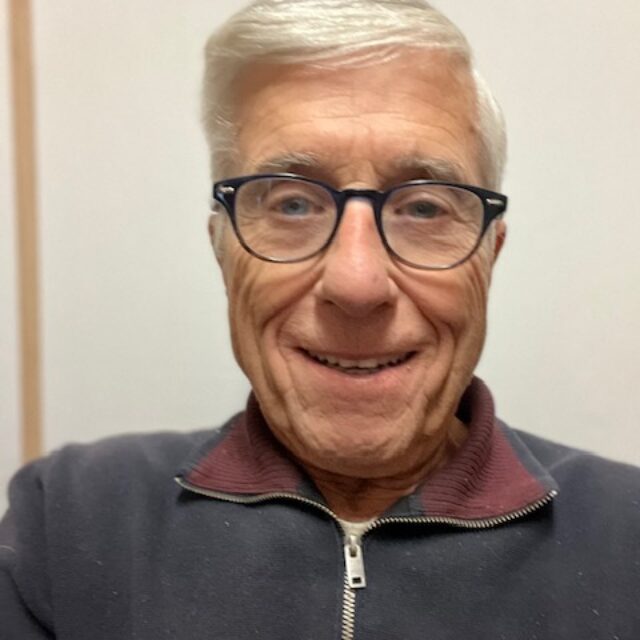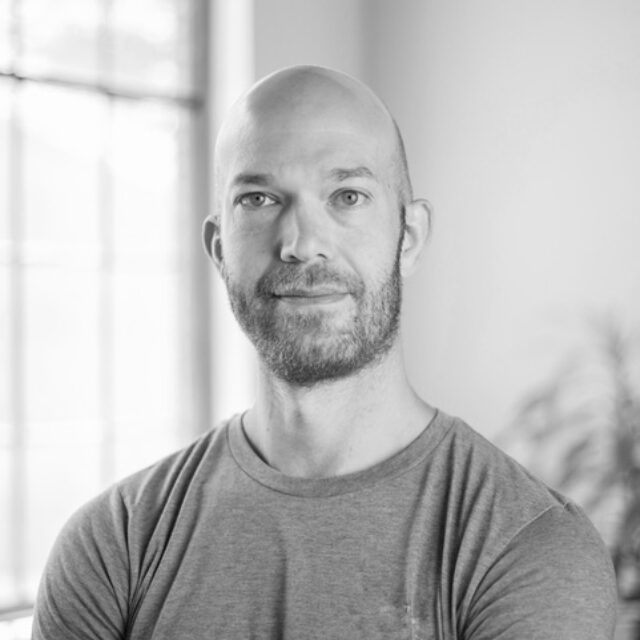Dr. Joseph Simonetti: Tools for Veteran Suicide Prevention

3.19.2024
Safety in Numbers
Welcome to Everytown Research & Policy’s Safety in Numbers blog series, where we will invite leading experts in the growing field of injury and safety prevention to present their rigorous research in clear, user-friendly language on a regular basis. Our goal is to share the latest developments, answer important questions, and stimulate evidence-based conversations on gun violence prevention in which all of us can participate. If you have a topic you want to hear more about, please feel free to suggest it at: [email protected].
Sarah Burd-Sharps, Director of Research
Note: The views, opinions, and content expressed in this product do not necessarily reflect the views, opinions, or policies of Everytown.
Dr. Joseph Simonetti is a physician and researcher at the US Department of Veterans Affairs (VA) Rocky Mountain Mental Illness Research, Education, and Clinical Center for Suicide Prevention and the Director of Mentorship and Education with the Firearm Injury Prevention Initiative at the University of Colorado Anschutz School of Medicine. He is engaged in a variety of suicide prevention efforts, including the development and testing of several veteran-centered lethal means safety interventions to be used in clinical settings.
How did you get involved with research on veterans’ issues, including veteran suicide?
In 2012, I started a health services research fellowship that was funded by the University of Washington and the VA. I started doing firearm-related research in Seattle right after the Sandy Hook Elementary School shooting in 2012, and went on the job market to be a firearm violence researcher in 2014. At the time, there was little grant funding to support this work, so when I interviewed for jobs, most institutions were interested in the research I had been doing in health services generally, not really the firearm side of things.
The one exception to that was in the VA. The VA’s leading clinical and research priority is veteran suicide prevention, and I think people had come to the realization that it would be difficult to move the needle on veteran suicide rates if we ignored that more than 70 percent of veteran suicides were due to firearm injury. So in 2015, the VA hired me to start working on finding ways to connect with veterans about firearm suicide prevention.
How do you approach your work?
As a physician, I have always been committed to delivering interventions in a patient-centric fashion. This means trying to figure out what a patient values and then working collaboratively to align evidence-based recommendations with what a patient can actually achieve. This approach has been instrumental in my work in the VA, and it’s how I approach each of my research questions.
Are conversations about firearms hard to have with patients?
I don’t think so. If a clinician can come to the bedside with respect for each person’s autonomy and humanity, as well as an understanding of why some people value firearms so much, then conversations about firearms are not so challenging. Quite frankly, as clinicians, I think we’re tasked with having much harder conversations about other topics on a daily basis.
If you look back 30 years or so ago, it was rare for clinicians to ask about alcohol use. But there’s this whole body of literature, largely stemming from the United Kingdom, about why clinicians didn’t want to talk about alcohol. It’s the same concerns we see as contemporary barriers to conversations about firearms—“I don’t want to upset my patient,” “I don’t know what language to use,” “I don’t know what to say if they say they are drinking too much,” or “It isn’t part of my business as a clinician.” To some degree, we’re still in that phase with our clinical firearm injury interventions. But, if you currently see a primary care clinician who has not assessed your alcohol intake, you probably need a new clinician. At some point, if we are thoughtful about our approach and in respecting the rights of our patients, I think firearm conversations will be just as expected and accepted.
This doesn’t necessarily mean that every patient I speak with about making changes to their firearm behaviors is going to follow through with those recommendations—but that’s okay. In healthcare, our patients have the right to disagree with our recommendations on any topic.
What are you focusing on now in your research?
Through my roles with the VA and the Firearm Injury Prevention Initiative at the University of Colorado, I’m working on a variety of projects aimed at preventing firearm injuries and other harms spanning all age groups. In the VA, I’m working on epidemiologic and health services studies to understand firearm injury risk factors and the clinical care we provide to veterans with elevated suicide risk. This work includes informatics research, in which we’re using natural language processing and machine learning approaches to better inform our risk models and clinical programs. I’m also working on several clinical interventions that aim to promote secure firearm storage practices among at-risk veterans.
Several of your studies have involved interviews with participants or focus group methods. Can you tell me why you include this in the work you do?
It’s important for a couple of reasons. First, we don’t know what we don’t know. That is, there are probably a bunch of cool, novel approaches to suicide prevention that we haven’t even thought of. By speaking with patients we intend to reach with our interventions, we get to hear what they think might work. Second, while I mentioned earlier that I don’t think these conversations are particularly challenging to have, that isn’t everyone’s experience. After learning more about patients’ perspectives on these types of conversations or interventions, we can translate those findings into educational resources for clinicians or even friends and other caregivers, and improve their abilities to have these conversations when they’re warranted.
How do clinical intervention tools work differently with veteran populations? Do approaches vary for subpopulations (e.g., women, BIPOC, LGBTQ+)?
One of the misconceptions about veterans is that they’re wholly distinct from nonveterans or that the veteran community is some kind of monolith. In reality, the veteran community is just as heterogeneous as any other, and what we’ve learned from nonveteran populations can be applied to issues among veterans.
I don’t think we know enough about how our interventions work overall, and certainly don’t know enough about how they work across various subgroups of the veteran population. There is a tremendous need to develop or adapt interventions specific to many of these groups, such as LGBTQ+ or women veterans, who have different risk factors and suicide rate trajectories than the overall veteran population. That area of work is in its nascency.
One of the challenges in VA is that the patient population is around 90 percent men, and so much of our research on veterans really becomes research about male veterans if we’re not careful in how we select participants or define research cohorts. However, there are researchers, like Dr. Lindsey Monteith, who are spearheading efforts to understand more about firearm suicide risk and potential interventions among women. Her work has been instrumental in teaching us how to begin thinking about firearm suicide prevention among women.
What do you think is the most common misconception about veterans and their risk for suicide, specifically firearm suicide?
An extremely common misconception is that veterans will never take steps to reduce their access to firearms when they’re at risk of suicide. Nothing could be farther from the truth. Our clinicians work with veterans all the time who have decided to sell their firearms, have stored them with a loved one, or have locked them up and given the lockbox key to the neighbor. Walk into any VFW or American Legion and ask the first person you see if they have ever held on to a firearm for a colleague who was having a hard time. Or walk into a firearm retail location and ask the manager if a firearm owner or family member of an owner has ever pulled into the parking lot with some guns in the trunk and said, “Can you please hold on to these for me?”
The point being: People do hard things to stay alive.
What are some next steps for your work in the field of suicide prevention among veterans?
First, there’s a tremendous need to test different types of clinical interventions. We still don’t know how successful interventions by healthcare professionals truly are in terms of their ability to prevent suicide. Everything we do is conceptually supported and evidence-based, but we need more data on hard outcomes.
I’m also thinking more and more about the role of misinformation about mental health reporting in clinical settings, particularly among veterans with respect to their Second Amendment rights. How do we go about dispelling some of the myths about clinical care and reporting so that veterans are not dissuaded from having forthcoming conversations with us? If veterans think that they can’t endorse depressive symptoms during a clinical encounter without their firearm rights being threatened—a common misconception—then we’re not able to address a common risk factor for suicide.
Lastly, I want to continue leveraging the VA’s innovative support for suicide prevention. Mission Daybreak was a great example—the VA offered $20 million to private companies and academic entities to pilot veteran suicide prevention projects, and some great things came out of that. VetStore, which provided funding for gun shops to provide gun storage options to veterans and their families, was a great example of how to bring the retail community into the suicide prevention field. I’m excited to see how those types of initiatives can be replicated on a larger scale. Right now, our team, led by Dr. Emmy Betz, is working with the Department of Defense to adapt the VetStore program for us around military installations. That project is called Pause To Protect.
About Joseph Simonetti, MD, MPH
Joseph Simonetti, MD, MPH, is a clinical investigator at the VA Rocky Mountain Mental Illness Research, Education, and Clinical Center (MIRECC) for Suicide Prevention and Director of Education and Mentorship of the Firearm Injury Prevention Initiative (FIPI) at the University of Colorado Anschutz School of Medicine. His research focuses on the prevention of firearm-related harms, especially veteran firearm suicide, through mixed-methods approaches, informatics and natural language processing work, and the development of patient-centered and culturally-informed clinical interventions. His research is currently funded by the VA Health Services Research & Development, the VA Office of Mental Health and Suicide Prevention, the Department of Defense, and other philanthropies.





